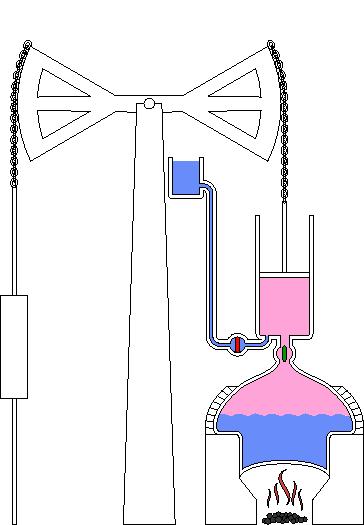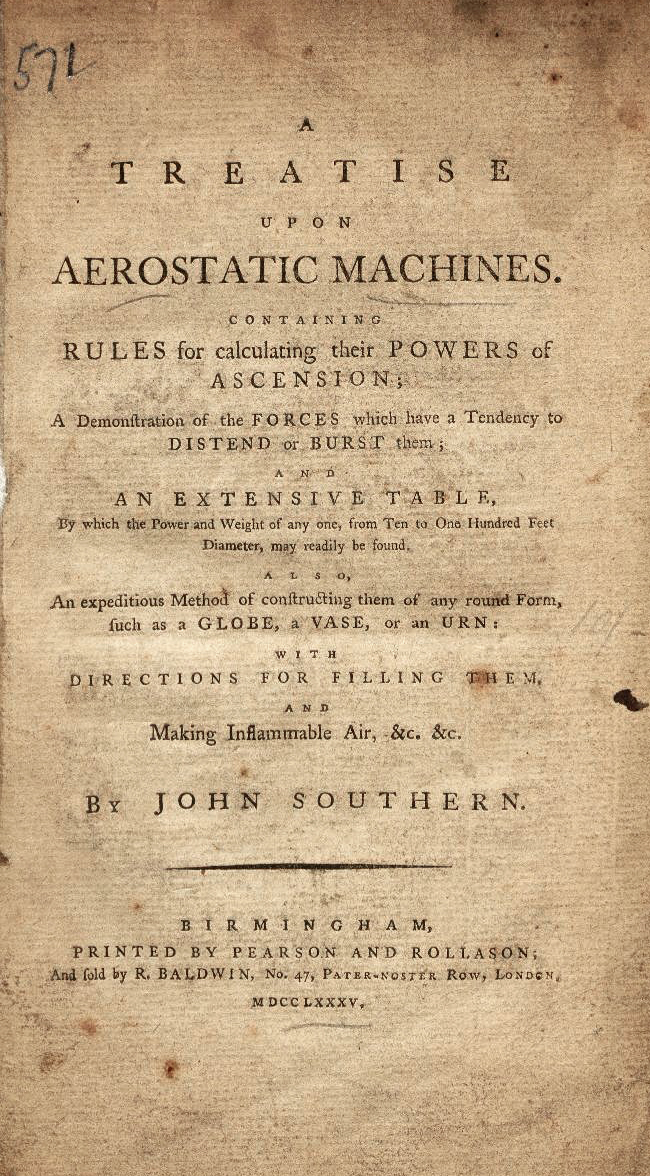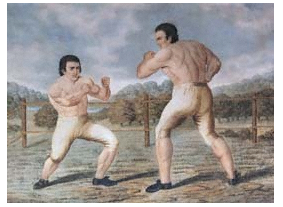|
Boulton And Watt
Boulton & Watt was an early British engineering and manufacturing firm in the business of designing and making marine and stationary steam engines. Founded in the English West Midlands around Birmingham in 1775 as a partnership between the English manufacturer Matthew Boulton and the Scottish engineer James Watt, the firm had a major role in the Industrial Revolution and grew to be a major producer of steam engines in the 19th century. The engine partnership The partnership was formed in 1775 to exploit Watt's patent for a steam engine with a separate condenser. This made much more efficient use of its fuel than the older Newcomen engine. Initially the business was based at the Soho Manufactory near Boulton's Soho House on the southern edge of the then-rural parish of Handsworth. However most of the components for their engines were made by others, for example the cylinders by John Wilkinson. In 1795, they began to make steam engines themselves at their Soho Foun ... [...More Info...] [...Related Items...] OR: [Wikipedia] [Google] [Baidu] |
General Partnership
A general partnership, the basic form of partnership under common law, is in most countries an association of persons or an unincorporated company with the following major features: *Must be created by agreement, proof of existence and estoppel. *Formed by two or more persons *The owners are jointly and severally liable for any legal actions and debts the company may face, unless otherwise provided by law or in the agreement. It is a partnership in which partners share equally in both responsibility and liability. Characteristics Partnerships have certain default characteristics relating to both (a) the relationship between the individual partners and (b) the relationship between the partnership and the outside world. The former can generally be overridden by express agreement between the partners. Whilst the latter is in general hardly varied, a careful draft would oust certain kinds of third party liability. A clause can contain that only the negligent partners can be su ... [...More Info...] [...Related Items...] OR: [Wikipedia] [Google] [Baidu] |
Newcomen Engine
The atmospheric engine was invented by Thomas Newcomen in 1712, and is often referred to as the Newcomen fire engine (see below) or simply as a Newcomen engine. The engine was operated by condensing steam drawn into the cylinder, thereby creating a partial vacuum which allowed the atmospheric pressure to push the piston into the cylinder. It was historically significant as the first practical device to harness steam to produce mechanical work. Newcomen engines were used throughout Britain and Europe, principally to pump water out of mines. Hundreds were constructed throughout the 18th century. James Watt's later engine design was an improved version of the Newcomen engine that roughly doubled fuel efficiency. Many atmospheric engines were converted to the Watt design, for a price which was based on a fraction of the fuel-savings. As a result, Watt is today better known than Newcomen in relation to the origin of the steam engine. Precursors Prior to Newcomen a number of smal ... [...More Info...] [...Related Items...] OR: [Wikipedia] [Google] [Baidu] |
Watt Apparatus 2
The watt (symbol: W) is the unit of power or radiant flux in the International System of Units (SI), equal to 1 joule per second or 1 kg⋅m2⋅s−3. It is used to quantify the rate of energy transfer. The watt is named after James Watt (1736–1819), an 18th-century Scottish inventor, mechanical engineer, and chemist who improved the Newcomen engine with his own steam engine in 1776. Watt's invention was fundamental for the Industrial Revolution. Overview When an object's velocity is held constant at one metre per second against a constant opposing force of one newton, the rate at which work is done is one watt. : \mathrm In terms of electromagnetism, one watt is the rate at which electrical work is performed when a current of one ampere (A) flows across an electrical potential difference of one volt (V), meaning the watt is equivalent to the volt-ampere (the latter unit, however, is used for a different quantity from the real power of an electrical circuit). : \m ... [...More Info...] [...Related Items...] OR: [Wikipedia] [Google] [Baidu] |
John Southern (engineer)
John Southern (c.1758–1815) was an English engineer, son of Thomas Southern of Derbyshire. He co-invented the indicator diagram with his employer, James Watt James Watt (; 30 January 1736 (19 January 1736 Old Style and New Style dates, OS) – 25 August 1819) was a Scottish people, Scottish invention, inventor, mechanical engineer, and chemist who improved on Thomas Newcomen's 1712 Newcomen steam ..., in 1796. Southern became a partner of the firm of Boulton & Watt in 1810. The use of the diagram was kept as a trade secret for a generation, only becoming public in the 1830s. References English engineers 18th-century British engineers People from Derbyshire 1815 deaths Year of birth unknown Year of birth uncertain {{England-engineer-stub ... [...More Info...] [...Related Items...] OR: [Wikipedia] [Google] [Baidu] |
Isaac Perrins
Isaac Perrins was an English bareknuckle prizefighter and 18th-century engineer. A man reputed to possess prodigious strength but a mild manner, he fought and lost one of the most notorious boxing matches of the era, a physically mismatched contest against the English Champion Tom Johnson. Such was the mismatch that Perrins was described as Hercules fighting a boy. During the period when he was prizefighting Perrins worked for Boulton and Watt, manufacturers of steam engines, based at their Soho Foundry, Birmingham, but also travelled around the country and at times acted as an informant on people who were thought to have breached his employer's patents. In the later years of his life he also ran a public house in Manchester and undertook engineering work on his own account. He was appointed to lead the Manchester fire brigade in 1799, and died a little over 12 months later in the performance of his duties. Early life There is little information regarding Issac Perrins' ... [...More Info...] [...Related Items...] OR: [Wikipedia] [Google] [Baidu] |
William Brunton
William Brunton Senior (26 May 1777 – 5 October 1851) was a Scottish engineer and inventor. Early life He was the eldest son of Robert Brunton, a watchmaker (14 Aug 1748–1834) of Dalkeith, where he was born. He studied mechanics in his father's watch and clock making shop, and engineering under his grandfather William Brunton (16 July 1706 – 22 March 1787), who was a colliery viewer in the neighborhood. (His grandfathers death certificate states that William Brunton was actually a portioner in Dalkeith, not a colliery viewer) Career In 1790 he commenced work in the fitting shops of the cotton mills at New Lanark built by David Dale and Sir Richard Arkwright. In 1796, he migrated south to Birmingham, being attracted by the fame of the Soho Foundry, obtaining employment with Boulton and Watt. He remained at Soho until he was made foreman and superintendent of the engine manufactory. Still only twenty-one, he would be sent alone to rectify problems on customers premise ... [...More Info...] [...Related Items...] OR: [Wikipedia] [Google] [Baidu] |
Peter Ewart
Peter Ewart (14 May 1767 – 15 September 1842) was a British engineer who was influential in developing the technologies of turbines and theories of thermodynamics. Biography He was son of the Church of Scotland minister of Troqueer near Dumfries, and was one of eleven children. His brother Joseph Ewart became British ambassador to Prussia; John, a doctor, became Chief Inspector of East India Company hospitals in India; and William, father of William Ewart, was business partner of Sir John Gladstone, father of William Ewart Gladstone, whose godfather he was and whom he was named after. Following graduation from the University of Edinburgh, he was apprenticed to millwright John Rennie. His work with water wheels led him to work with Matthew Boulton and James Watt for whom by 1790 he was agent in Manchester. At the same time as acting as agent he was also trading on his own account as a millwright, enabling him to provide the complementary shafts, gears and other necessit ... [...More Info...] [...Related Items...] OR: [Wikipedia] [Google] [Baidu] |
W & T Avery Ltd
W, or w, is the twenty-third and fourth-to-last letter of the Latin alphabet, used in the modern English alphabet, the alphabets of other western European languages and others worldwide. It represents a consonant, but in some languages it represents a vowel. Its name in English is ''double-u'',Pronounced in formal situations, but colloquially often , , or , with a silent ''l''. plural ''double-ues''. History The classical Latin alphabet, from which the modern European alphabets derived, did not have the "W' character. The "W" sounds were represented by the Latin letter " V" (at the time, not yet distinct from " U"). The sounds (spelled ) and (spelled ) of Classical Latin developed into a bilabial fricative between vowels in Early Medieval Latin. Therefore, no longer adequately represented the labial-velar approximant sound of Germanic phonology. The Germanic phoneme was therefore written as or ( and becoming distinct only by the Early Modern period) b ... [...More Info...] [...Related Items...] OR: [Wikipedia] [Google] [Baidu] |
England
England is a country that is part of the United Kingdom. It shares land borders with Wales to its west and Scotland to its north. The Irish Sea lies northwest and the Celtic Sea to the southwest. It is separated from continental Europe by the North Sea to the east and the English Channel to the south. The country covers five-eighths of the island of Great Britain, which lies in the North Atlantic, and includes over 100 smaller islands, such as the Isles of Scilly and the Isle of Wight. The area now called England was first inhabited by modern humans during the Upper Paleolithic period, but takes its name from the Angles, a Germanic tribe deriving its name from the Anglia peninsula, who settled during the 5th and 6th centuries. England became a unified state in the 10th century and has had a significant cultural and legal impact on the wider world since the Age of Discovery, which began during the 15th century. The English language, the Anglican Church, and Eng ... [...More Info...] [...Related Items...] OR: [Wikipedia] [Google] [Baidu] |
Smethwick
Smethwick () is an industrial town in Sandwell, West Midlands, England. It lies west of Birmingham city centre. Historically it was in Staffordshire. In 2019, the ward of Smethwick had an estimated population of 15,246, while the wider built-up area subdivision has a population of 53,653. History It was suggested that the name Smethwick meant "smiths' place of work", but a more recent interpretation has suggested the name means "the settlement on the smooth land". Smethwick was recorded in the Domesday Book as ''Smedeuuich'', the ''d'' in this spelling being the Anglo-Saxon letter eth. Until the end of the 18th century it was an outlying hamlet of the south Staffordshire village of Harborne. Harborne became part of the county borough of Birmingham and thus transferred from Staffordshire to Warwickshire in 1891, leaving Smethwick in the County of Staffordshire. The world's oldest working engine, the Smethwick Engine, made by Boulton & Watt, originally stood nea ... [...More Info...] [...Related Items...] OR: [Wikipedia] [Google] [Baidu] |
Soho Foundry
Soho Foundry is a factory created in 1775 by Matthew Boulton and James Watt and their sons Matthew Robinson Boulton and James Watt Jr. at Smethwick, West Midlands, England (), for the manufacture of steam engines. Now owned by Avery Weigh-Tronix, it is used for the manufacture of weighing machines. The early history of the Soho Foundry is of pivotal importance both to the history of the industrial revolution and to the study of the development of management theory. The Soho Foundry stood out from other factories of the day in the sophistication of its planning, its production processes and its management techniques; practising concepts that wouldn't become commonplace until a century later. Comparing its workings to the techniques of mass production and scientific management made famous by Henry Ford and Frederick Winslow Taylor in the United States in the early 20th century, the economist Eric Roll wrote "Neither Taylor, Ford nor any other modern experts devised an ... [...More Info...] [...Related Items...] OR: [Wikipedia] [Google] [Baidu] |
John Wilkinson (industrialist)
John "Iron-Mad" Wilkinson (1728 – 14 July 1808) was an English industrialist who pioneered the manufacture of cast iron and the use of cast-iron goods during the Industrial Revolution. He was the inventor of a precision boring machine that could bore cast iron cylinders, such as cannon barrels and piston cylinders used in the steam engines of James Watt. His boring machine has been called the first machine tool. He also developed a blowing device for blast furnaces that allowed higher temperatures, increasing their efficiency, and helped sponsor the first iron bridge in Coalbrookdale. He is notable for his method of cannon boring, his techniques at casting iron and his work with the government of France to establish a cannon foundry. Biography Early life John Wilkinson was born in Little Clifton, Bridgefoot, Cumberland (now part of Cumbria), the eldest son of Isaac Wilkinson and Mary Johnson. Isaac was then the potfounder at the blast furnace there, one of the first ... [...More Info...] [...Related Items...] OR: [Wikipedia] [Google] [Baidu] |






